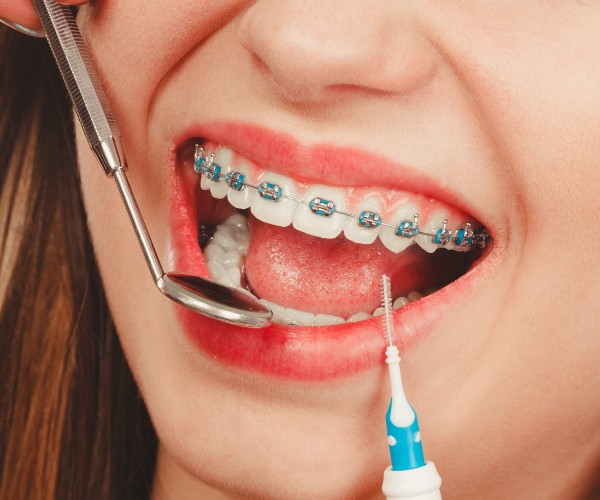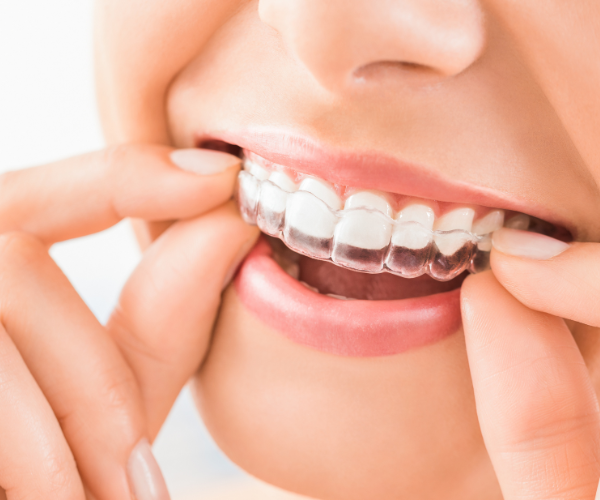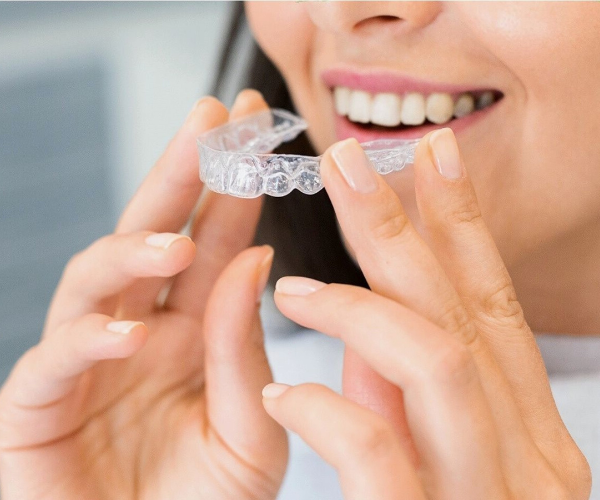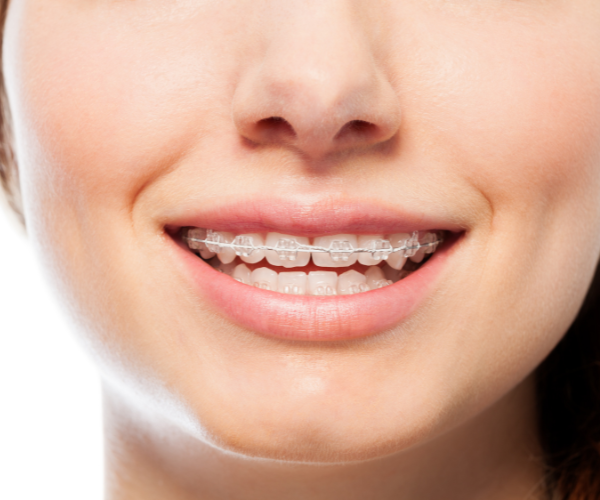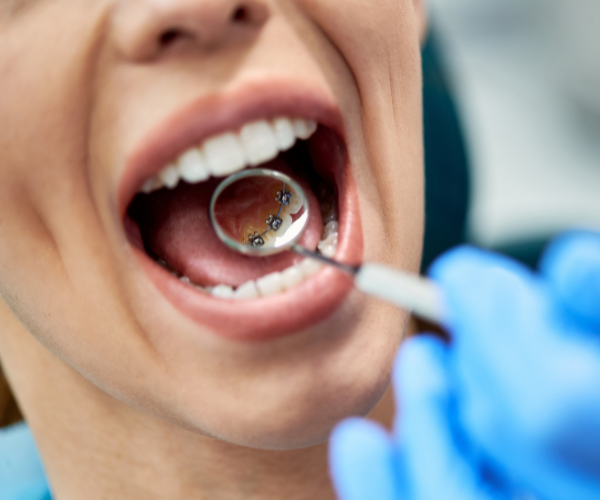Orthodontics
Dentofacial Orthopedics
Orthodontics means more than a beautiful smile: it means a healthy smile, too. Also known as dentofacial orthopedics, orthodontics is the dental specialty concerned with correctly positioned teeth, jaw bones, jaw joints, and chewing, muscles. Now people of all ages can enjoy healthier teeth and gums and a better bite for normal chewing, swallowing, and breathing. With today’s evaluation and treatment techniques, a healthy smile can be yours.
Before planning treatment, we examine your teeth, jaws, jaw joints, face, and profile, and study how you bite and swallow. Then your dental and medical histories are taken. You’ll be asked about your specific goals to achieve desired results. An orthodontic x ray is required for treatment planning. Models of your bite will be made which help us prepare your appliances and show how your teeth and jaws fit together. Your photographs will also be clicked before and after the treatment which give us a record of your profile, face, and teeth and help appreciate the results at the end of the treatment.
There are various types of orthodontic treatments and procedures we offer which completely depends on the individual case and every treatment is customized for the patient based on the requirements. The orthodontic treatments are as below.
Metal Braces
Metal braces are the tried and tested method for teeth straightening, correcting the alignment of teeth and facial asymmetries. They consist of metal brackets which are bonded on the outer/front surface of the teeth. Metallic braces were among the first orthodontic appliances that were introduced for orthodontic treatment of misaligned or crooked teeth. Still, they are being commonly used in orthodontics, besides other types of braces such as ceramic braces and lingual braces. Conventional metal braces are made of high-quality stainless steel or titanium alloys.
Clear Aligners
The main drawback of metal braces being aesthetics the patients can now say goodbye to these unesthetic braces due to the availability of clear aligners which work just like the braces, without disturbing the smile or creating any inconvenience during smiling, eating and speech.
Clear aligners are basically removable aligners that are fabricated from transparent materials. They are worn over the teeth, and are designed to exert controlled forces on your teeth to gradually move and re-align them in the right direction. Normally 16 to 30 sets of numbered aligners are manufactured and given to the patient to be worn in the same sequence. Each aligner is worn for about two weeks.
Preparation Steps
Benefits and Drawbacks of Clear Aligners
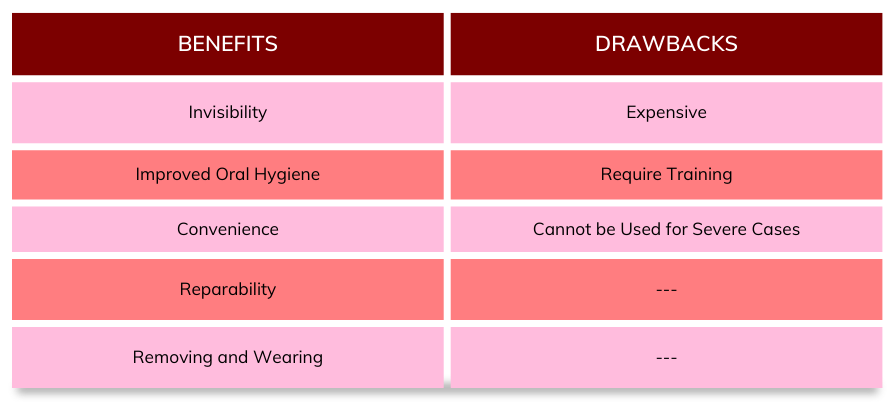
Invisalign Treatment
Invisalign is a brand of invisible aligners. Manufactured by Align Technology, Invisalign aligners was the first orthodontic system using transparent aligners that became available to the public. Today it has the largest market share. The reason of using Invisalign is their patented product which utilizes SmartTrack Material®, making them easier to put on and take off as well as accelerate results.
Not all invisible aligners are created equal and Invisalign has proven itself to be the best of the best treating over 6 million smiles including 1.4 million teens. Invisalign is so dedicated to teen orthodontics, they introduced Invisalign for Teens in 2008 customizing their invisible aligners.
Tooth Colored Braces
Ceramic braces are the latest and most aesthetic form of orthodontic braces offered by modern dentistry. Conventionally, metal braces are used for orthodontic treatment but despite their excellent efficiency, their unesthetic metallic appearance is a major concern for many patients especially because braces may have to be worn for two to three years. Thus, an alternative for these metallic braces is the tooth-colored ceramic braces.
Ceramics are an important class of materials with many useful properties for manufacturing a wide variety of industrial and medical equipment. Dentists have been using them for crowns and small bridges. Now they are also being used as braces. The advantage that ceramic has over stainless steel is its optical translucence! Light can partially pass through them just as it does through dental enamel. This makes ceramics very popular for dental crowns, bridges, and now, braces.
Ceramic brackets have replaced steel or plastic brackets in dental braces, making them much less visible. Although the steel arch wire is still present. It can be silver or frosted white color. Such ceramic braces are not visible except at very close quarters.
Lingual Braces
For conventional wire braces, the arch wires run outside the teeth and hold the brackets also outside the teeth. Thus, the arch wire and the brackets show up when the person speaks or smiles.
To overcome this problem, braces were designed in such a way that they were attached to the lingual (towards the tongue) surface of the teeth and they became invisible. These types of braces are known as lingual braces. Thus cosmetically, lingual braces are far superior to conventional wire braces.
Lingual braces are applied just like conventional braces only difference being that they are attached to the inner surfaces of the teeth unlike the conventional braces that are applied on the outer surfaces Just like for conventional braces, adjustments must be made monthly, and the complete alignment may take two-three years when using lingual braces. The exact period will depend on the initial misalignment, crowding of the teeth, or bite problems. Again, retainers must be used for about six months after the braces are removed.
Not all orthodontists offer lingual braces because special training and technical expertise are needed. Space between the teeth and the tongue or palate may be limited, and the braces may initially irritate. The arch wire and the brackets are custom-made due to these complications, and hence, lingual braces cost somewhat more.
